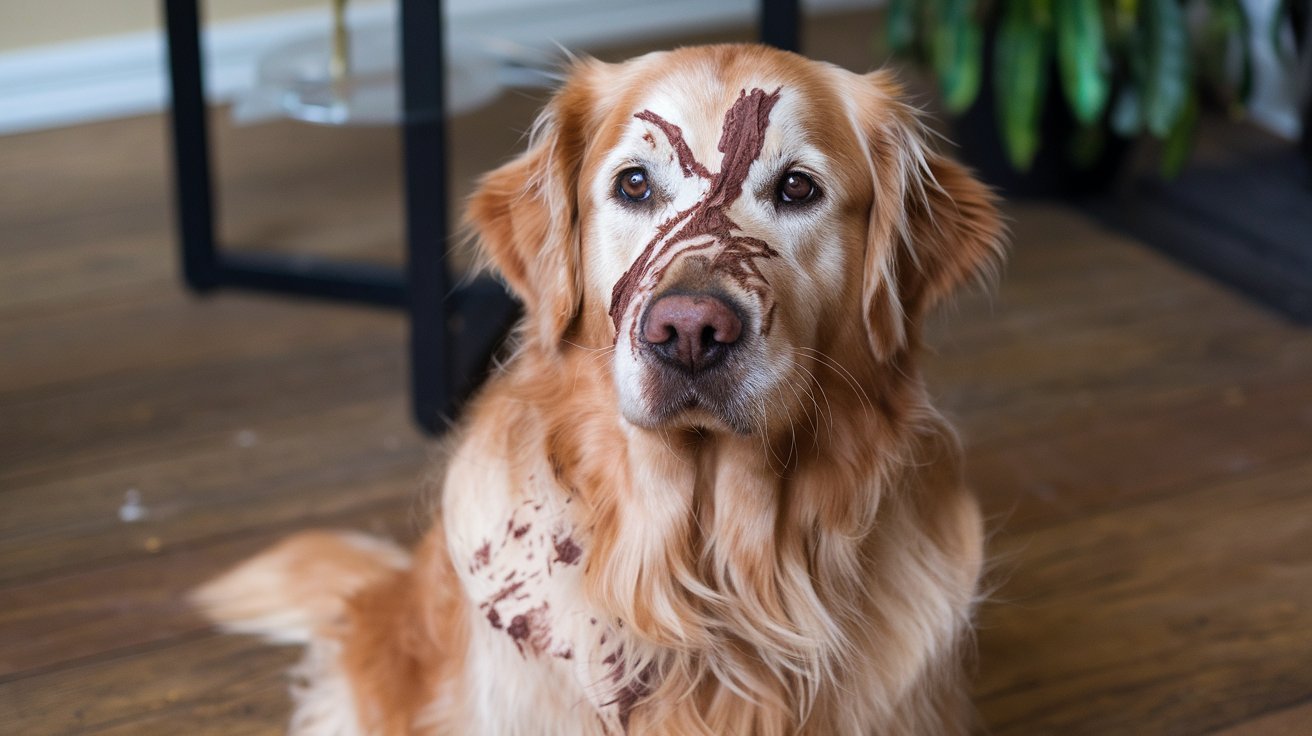Why Is Chocolate Dangerous for Dogs?
Chocolate contains theobromine and caffeine, two stimulants that can be harmful to dogs. My Dog Ate Chocolate but Is Acting Fine These substances can affect a dog’s heart, kidneys, and nervous system. While humans can metabolize theobromine quickly, dogs process it much slower, which means it can accumulate in their system and cause serious health problems.
The severity of chocolate toxicity depends on several factors, including:
- Type of chocolate: Dark chocolate and unsweetened baking chocolate contain more theobromine than milk chocolate.
- Size of your dog: Smaller dogs are more at risk than larger dogs.
- Amount of chocolate consumed: The more chocolate your dog eats, the greater the risk.
If you’re not sure how much chocolate your dog has eaten, it’s always best to err on the side of caution.
My Dog Ate Chocolate but Is Acting Fine: Should I Still Worry?
My Dog Ate Chocolate but Is Acting Fine It’s not uncommon for dogs to appear fine after eating chocolate, especially if they’ve only had a small amount or if they ate milk chocolate, which contains less theobromine. However, just because your dog is acting normal doesn’t mean everything is okay. Chocolate poisoning can have delayed symptoms, and it might take hours or even days for them to show.
Here are some symptoms of chocolate poisoning to watch for:
- Vomiting or diarrhea
- Excessive thirst and urination
- Hyperactivity or restlessness
- Panting or rapid breathing
- Muscle tremors or seizures
- Increased heart rate
If your dog is showing any of these symptoms, it’s crucial to act quickly.
What to Do If Your Dog Eats Chocolate
If you suspect that your dog has eaten chocolate, even if they seem fine, here’s a step-by-step guide on what to do next:
1. Assess the Situation
First, try to determine how much chocolate your dog ate and what type it was. A small amount of milk chocolate is less dangerous than a small amount of dark chocolate or baking chocolate. Use this chocolate toxicity calculator to get a rough idea of whether your dog is at risk.
2. Contact Your Veterinarian
Even if your dog seems fine, it’s important to call your veterinarian as soon as possible. They can advise you on the best course of action based on your dog’s size, the type of chocolate eaten, and the amount consumed. If your vet isn’t available, call a pet poison control hotline for guidance.
3. Watch for Symptoms
If your dog ate only a small amount of chocolate, your vet might recommend monitoring them at home. Keep a close eye on them for the next 24-48 hours, and look out for any of the symptoms of chocolate poisoning mentioned earlier.
4. Inducing Vomiting (If Necessary)
In some cases, your vet may advise you to induce vomiting to get the chocolate out of your dog’s system before it can be fully absorbed. This should only be done under the guidance of a vet, as inducing vomiting can be dangerous if done incorrectly.
5. Visit the Vet
If your dog has eaten a large amount of chocolate or if they start showing symptoms, take them to the vet immediately. The vet may administer activated charcoal to help prevent further absorption of the theobromine or provide other treatments, such as intravenous fluids or medications to control seizures or heart arrhythmias.
Real-Life Anecdote: When Max Ate a Chocolate Bar
My Dog Ate Chocolate but Is Acting Fine Let me tell you about Max, a spirited little terrier with a nose for mischief. One day, while his owner, Sarah, was out of the room, Max managed to snag a chocolate bar from the counter. When Sarah came back and saw the empty wrapper, panic set in. Max seemed fine, wagging his tail and looking for more treats.
But Sarah knew better. She quickly called her vet, who advised her to bring Max in for observation. A few hours later, Max started showing signs of hyperactivity and restlessness, followed by vomiting. The vet was able to treat him in time, and Max recovered fully, but it was a close call. This experience taught Sarah that even if her dog was acting fine, quick action was necessary.
Prevention: How to Keep Your Dog Safe
While accidents happen, there are several ways you can prevent your dog from getting their paws on chocolate in the future:
- Keep chocolate out of reach: Store chocolate in high cabinets or places your dog can’t access. Dogs are excellent at sniffing out treats!
- Educate your family and guests: Make sure everyone in your home knows that chocolate is dangerous for dogs and should never be given to them as a treat.
- Use pet-safe alternatives: If you want to treat your dog, there are plenty of dog-friendly chocolates on the market made with carob, a safe alternative to chocolate.
Conclusion: Don’t Wait, Take Action
My Dog Ate Chocolate but Is Acting Fine If your dog ate chocolate but seems fine, don’t let that false sense of security delay your response. Even small amounts of chocolate can be harmful, and chocolate poisoning might not show symptoms right away. Acting quickly, contacting your vet, and monitoring your dog can make all the difference.
Hyperlinks

